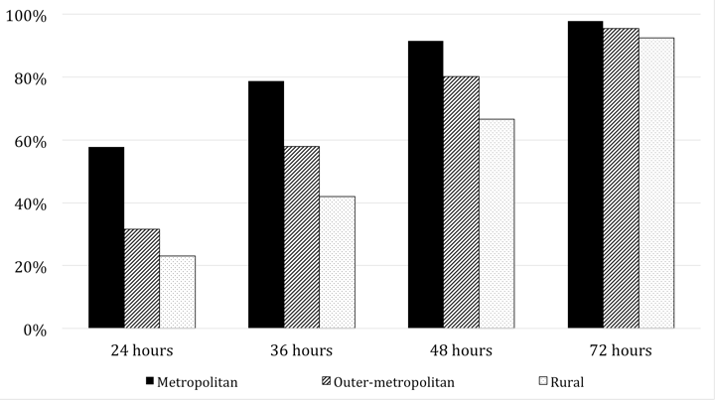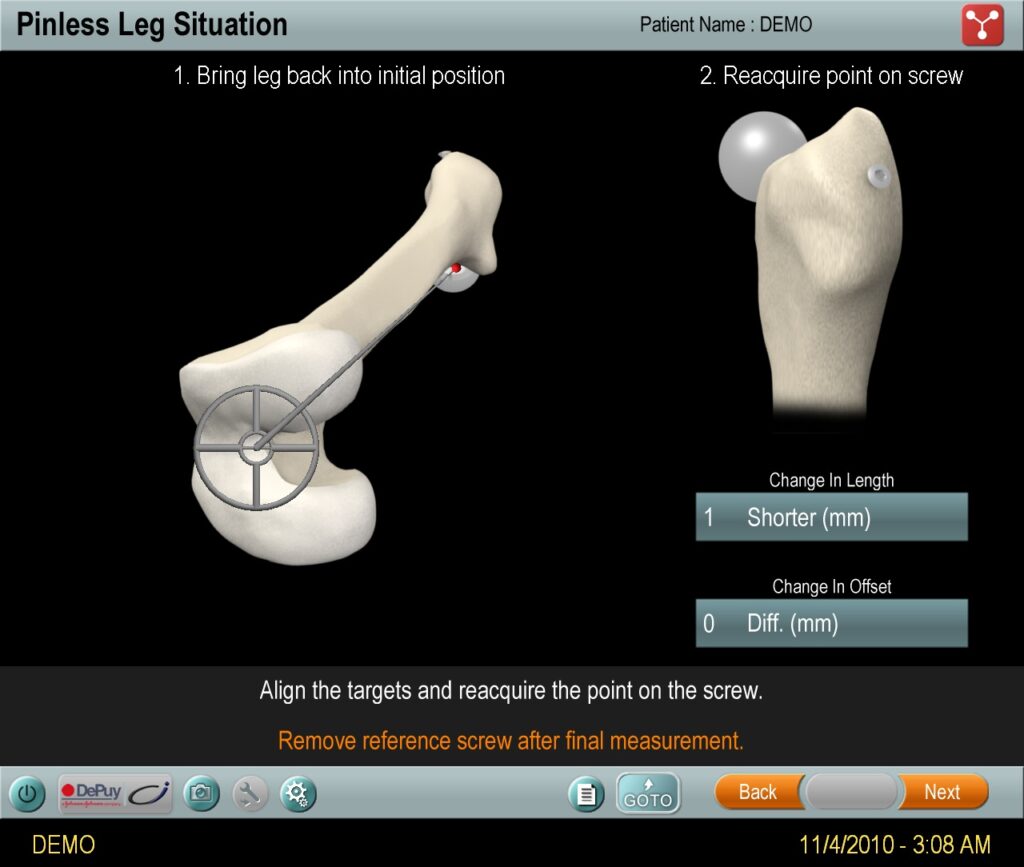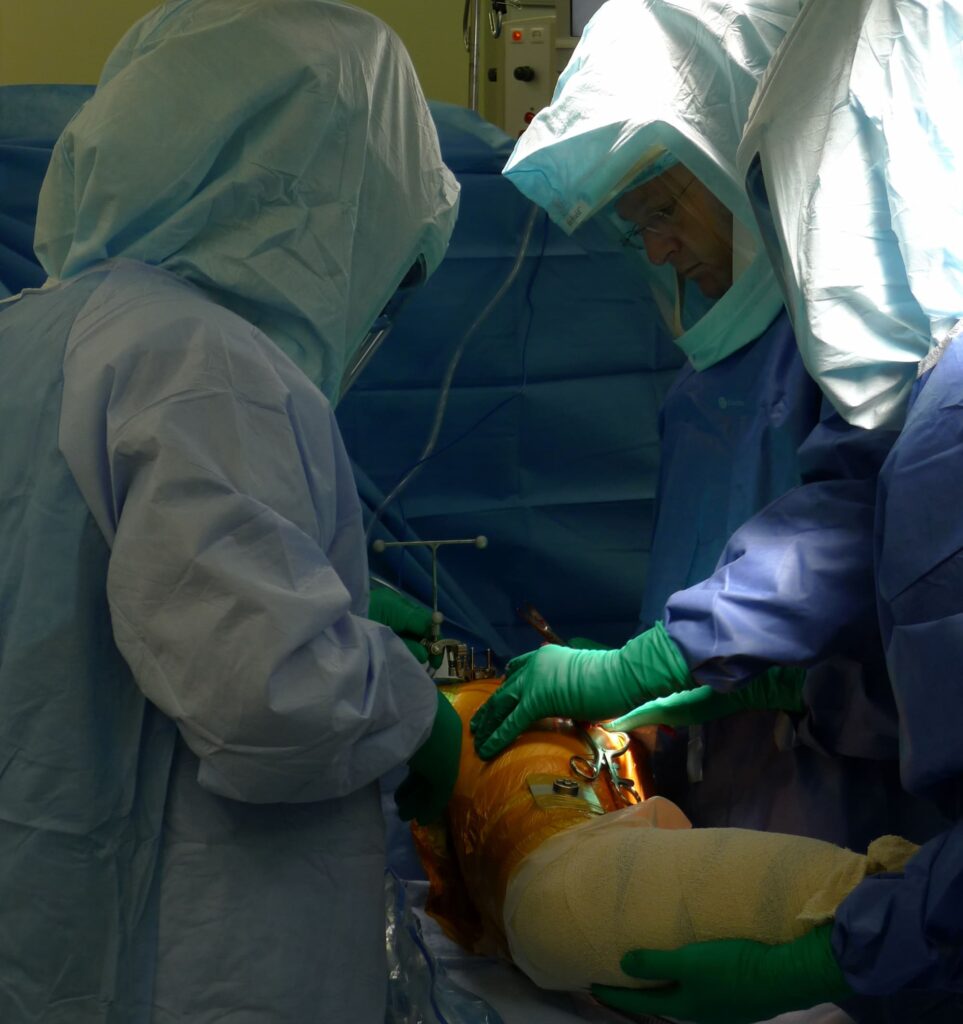The Tyranny of Distance: How Hospital Transfer Affects Time to Surgery for Hip Fracture Patient
Authors: Melanie Marley, Anton Lambers, Ian Marley, Lisa Welthy, Hannah Seymour
Site: Fiona Stanley Hospital, WA
This study by Dr Lambers and colleagues investigates the impact of patient location on surgical outcomes for hip fractures in Western Australia, a region known for its vast geography. Using data from 5,691 patients treated between 2015 and 2019, the study examines how the distance from the operative hospital affects time to surgery, length of hospital stay, and mortality rates.
Patients were divided into three groups: those presenting directly to major city hospitals, those from outer-metropolitan hospitals (less than 2.5 hours by road), and rural patients requiring air transfers. The differences in time to treatment werewere quantified here for the first time. While patients presenting directly to a city hospital had operations within 27 hours of presentation, outer-metropolitan patients took 37 hours and rural patients took 43 hours. It is well established that longer times to surgery result in higher rates of death in hip fractures so these findings are significant, however this wasn’t shown in the small sample size studied.

The study emphasises the importance of timely surgical intervention, aligning with Australian guidelines recommending surgery within 36–48 hours. It highlights the challenges of geographic isolation and suggests that reducing delays, especially for outer-metropolitan patients, could improve outcomes. These findings underscore the need for targeted strategies to streamline remote regions’ patient transfers and surgical processes.




